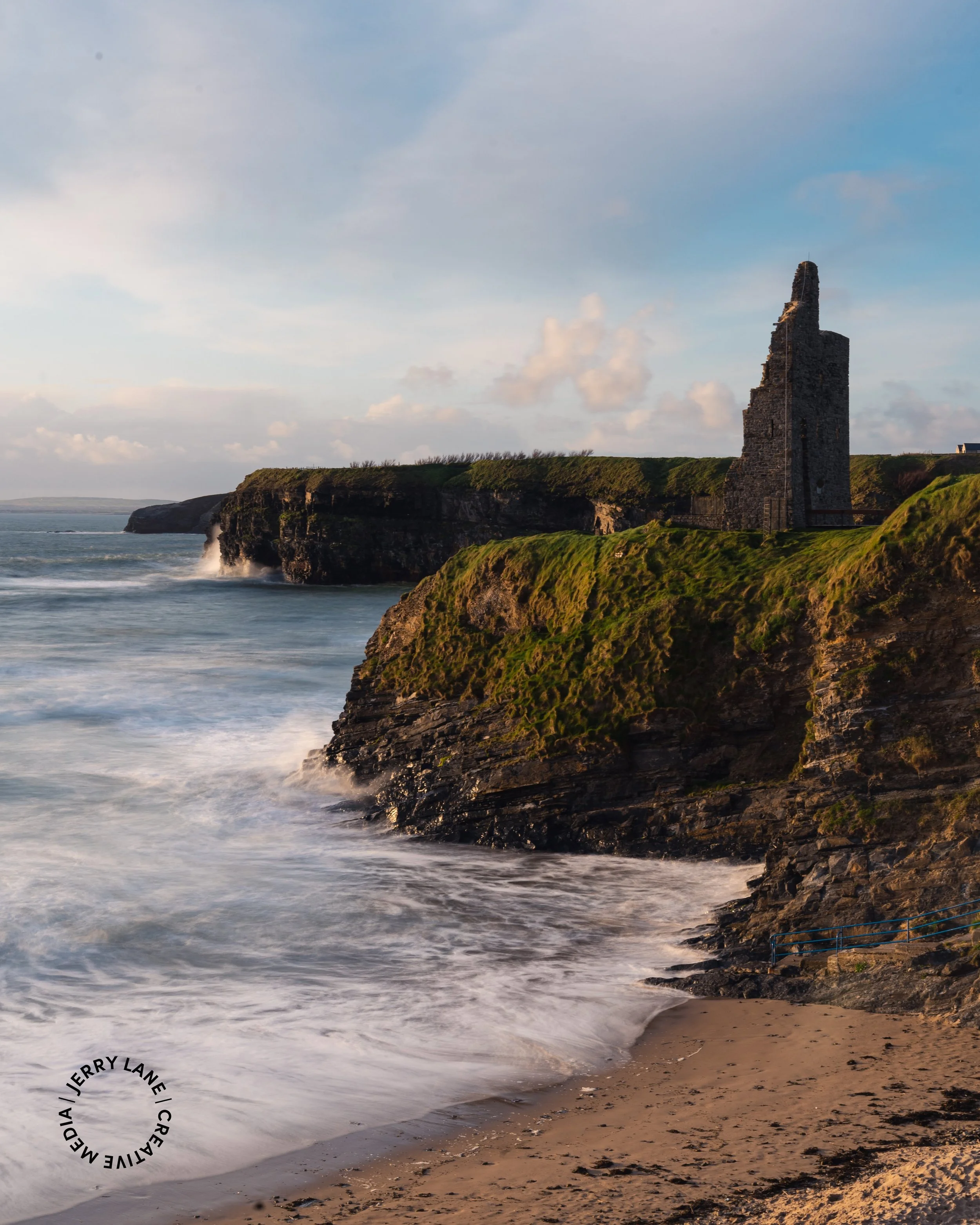Long Exposure Seascapes in Ballybunion
Short rambling notes on long exposure photography.
Long exposure photography is something I enjoy but equally feel it’s overdone and gets too much credit. You may be wondering at this point what a “long exposure photograph” is, right? To better understand what I mean think about what this shot would normally look like, with clearly defined waves rolling in to the shore, and plenty of detail in the water. However, here I used a long exposure of 3.2 seconds. This results in the the smooth & whispy water seen here.
To better understand what this means let’s take an example most of us have experienced; shooting a photo with our phone. So let’s say you shoot a photo with your phone in a bar with bad lighting, a group selfie maybe, and you don’t use the flash. It’ll likely be blurry, and more often than not the blur is due to a longer shutter speed. This happens because the phone needs to capture light for a longer period of time to capture a properly exposed photo. So it uses a longer shutter speed, and because you and your friends move or your hand moves you end up with blurry faces. 🙃 In contrast, when you’re in very bright lighting conditions the camera will use a short shutter speed, possibly 1/1000 or 1/8000 of a second. This is because so much light is hitting the sensor and if it doesn’t drop the shutter speed to a shorter speed it’ll leave you with an all white image and little detail.
When shooting with a DSLR or mirrorless camera you can have full control over the settings such as shutter speed. Some apps on phones replicate this and give you back controls over these settings too. You might be wondering how I got a shutter speed of 3.2 seconds with so much light in the scene, and this is where the neutral density filter comes into play. The ND filter is essentially a high quality piece of darkened glass that you place in front of your lens. This dark glass reduces the amount of light passing into the camera and onto the sensor, enabling you to capture dramatic long exposure shots in brighter conditions. Doing so requires popping your camera on a tripod and making sure to use a trigger switch or using the in-build timer so you’re not pressing and introducing movement to the shot.
This may be an oversimplification of the process to be honest with you, but it’s just a little post to mark the day for me, as I begin working on a new body of work & with a renewed vigour for my land & seascape photography.
Have a good week ahead.
Jerry
